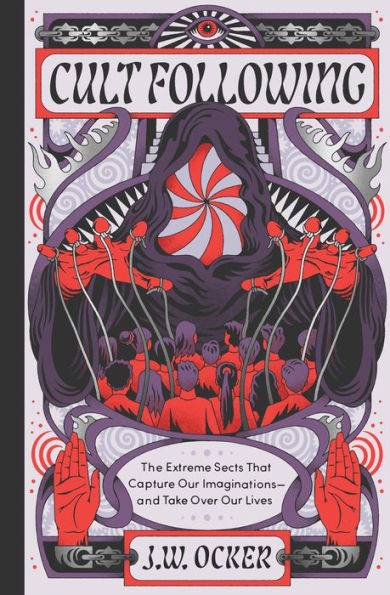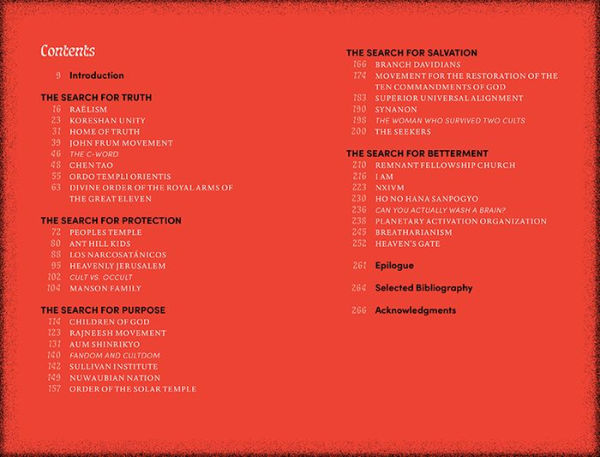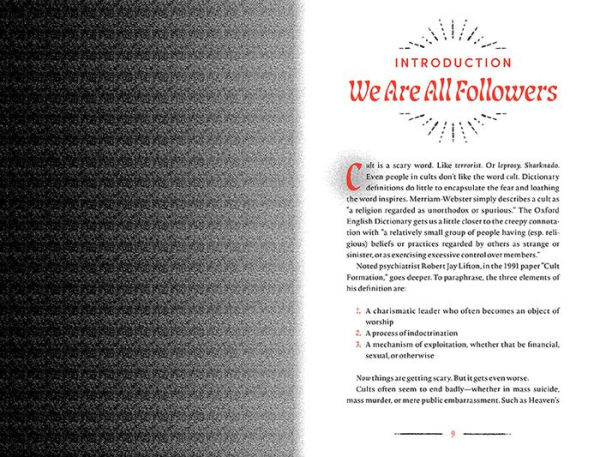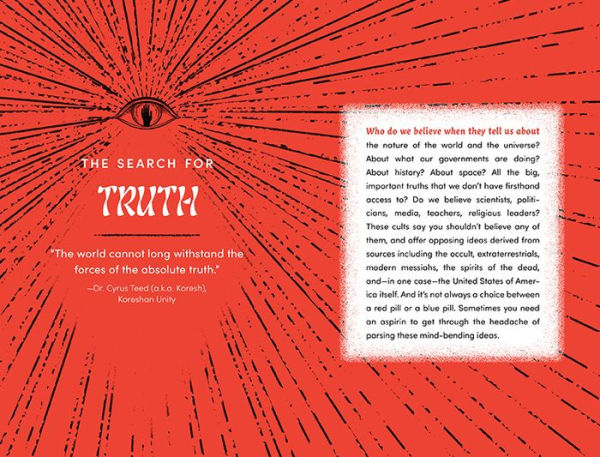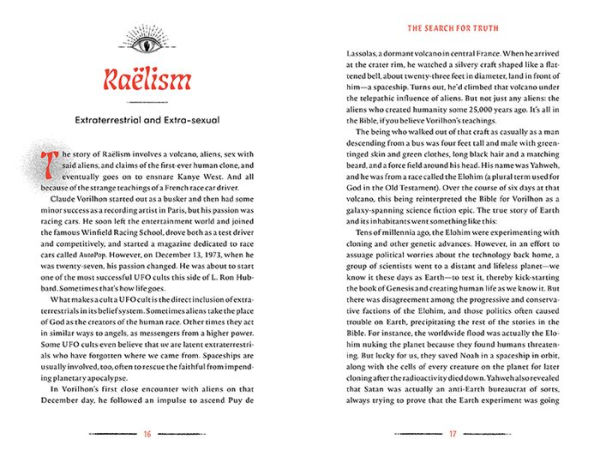Cult Following: The Extreme Sects That Capture Our Imaginations-and Take Over Our Lives
“A must-read for those with a taste for cult narratives.”—Publishers Weekly
From the author of Cursed Objects and The United States of Cryptids, an eye-popping compendium of the 30 most infamous, audacious, and dangerous cults in history
Have you ever wondered how ordinary people end up enmeshed in extreme cults? Everything you’ve ever wanted to know about history’s most notorious cults—and the psychology of the people who join them—is packed into this accessible, engaging volume. Walk in the footsteps of those who were lured into such sinister groups as:
In this fascinating collection, weird history expert J. W. Ocker sheds light on the terrifying attraction of cults, demonstrating the elasticity of belief, the desperateness of belonging, and the tragedy of trust.
1144578610
From the author of Cursed Objects and The United States of Cryptids, an eye-popping compendium of the 30 most infamous, audacious, and dangerous cults in history
Have you ever wondered how ordinary people end up enmeshed in extreme cults? Everything you’ve ever wanted to know about history’s most notorious cults—and the psychology of the people who join them—is packed into this accessible, engaging volume. Walk in the footsteps of those who were lured into such sinister groups as:
- Branch Davidians: This cult was waiting out the apocalypse when the FBI infamously raided their compound in Waco, Texas.
- Los Narcosatánicos: This group of drug traffickers in 1980s Mexico committed human sacrifice and believed their leader had magic powers.
- Breatharianism: Breatharians believe that humans can live on air alone, and their founder claimed to have gone without food for seventeen years.
- NXIVM: This twenty-first-century cult attracted Hollywood actresses and engaged in sex trafficking, forced labor, and racketeering under the guise of personal development seminars.
- Heaven’s Gate: The Heaven’s Gate UFO cult ended in the suicide of thirty-nine members who believed they would ascent to a spaceship after death.
In this fascinating collection, weird history expert J. W. Ocker sheds light on the terrifying attraction of cults, demonstrating the elasticity of belief, the desperateness of belonging, and the tragedy of trust.
Cult Following: The Extreme Sects That Capture Our Imaginations-and Take Over Our Lives
“A must-read for those with a taste for cult narratives.”—Publishers Weekly
From the author of Cursed Objects and The United States of Cryptids, an eye-popping compendium of the 30 most infamous, audacious, and dangerous cults in history
Have you ever wondered how ordinary people end up enmeshed in extreme cults? Everything you’ve ever wanted to know about history’s most notorious cults—and the psychology of the people who join them—is packed into this accessible, engaging volume. Walk in the footsteps of those who were lured into such sinister groups as:
In this fascinating collection, weird history expert J. W. Ocker sheds light on the terrifying attraction of cults, demonstrating the elasticity of belief, the desperateness of belonging, and the tragedy of trust.
From the author of Cursed Objects and The United States of Cryptids, an eye-popping compendium of the 30 most infamous, audacious, and dangerous cults in history
Have you ever wondered how ordinary people end up enmeshed in extreme cults? Everything you’ve ever wanted to know about history’s most notorious cults—and the psychology of the people who join them—is packed into this accessible, engaging volume. Walk in the footsteps of those who were lured into such sinister groups as:
- Branch Davidians: This cult was waiting out the apocalypse when the FBI infamously raided their compound in Waco, Texas.
- Los Narcosatánicos: This group of drug traffickers in 1980s Mexico committed human sacrifice and believed their leader had magic powers.
- Breatharianism: Breatharians believe that humans can live on air alone, and their founder claimed to have gone without food for seventeen years.
- NXIVM: This twenty-first-century cult attracted Hollywood actresses and engaged in sex trafficking, forced labor, and racketeering under the guise of personal development seminars.
- Heaven’s Gate: The Heaven’s Gate UFO cult ended in the suicide of thirty-nine members who believed they would ascent to a spaceship after death.
In this fascinating collection, weird history expert J. W. Ocker sheds light on the terrifying attraction of cults, demonstrating the elasticity of belief, the desperateness of belonging, and the tragedy of trust.
19.99
In Stock
5
1

Cult Following: The Extreme Sects That Capture Our Imaginations-and Take Over Our Lives
272
Cult Following: The Extreme Sects That Capture Our Imaginations-and Take Over Our Lives
272
19.99
In Stock

Product Details
| ISBN-13: | 9781683694120 |
|---|---|
| Publisher: | Quirk Publishing |
| Publication date: | 09/10/2024 |
| Pages: | 272 |
| Sales rank: | 55,055 |
| Product dimensions: | 5.30(w) x 8.10(h) x 1.00(d) |
About the Author
From the B&N Reads Blog






